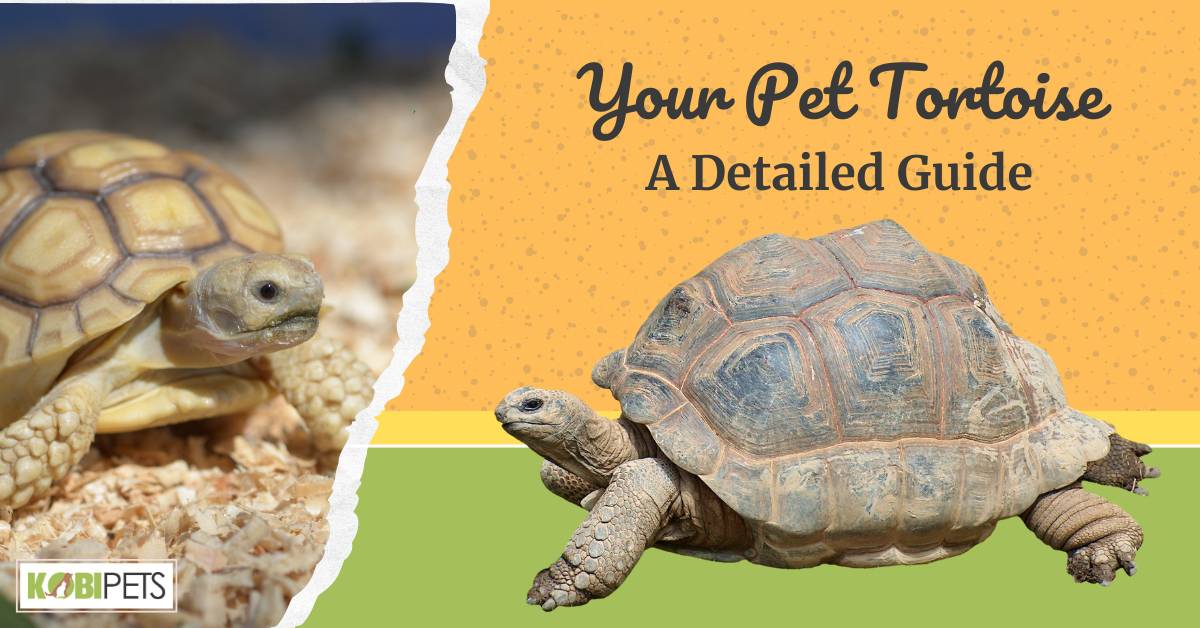
Tortoises are a popular pet and with good reason! They can live a long time—some over 100 years old—and if properly cared for, they can make great pets.
It is important to ensure that they are provided with the proper housing, diet, and environment in order to keep them healthy and happy. A large enclosure, such as a tortoise table should be provided and filled with an appropriate substrate for burrowing.
They are low-maintenance animals that don’t require a lot of space or too much attention, but they do need some specific care. In this guide, we will go over everything you need to know about caring for your pet tortoise.
Types of Tortoises: Differences and Characteristics
Tortoises are a diverse group of reptiles that belong to the family of Testudines. They come in a variety of sizes, shapes, and colors and are known for their slow movements and long lifespan.
There are many different species of tortoises found around the world, and each has its own unique characteristics and behaviors.
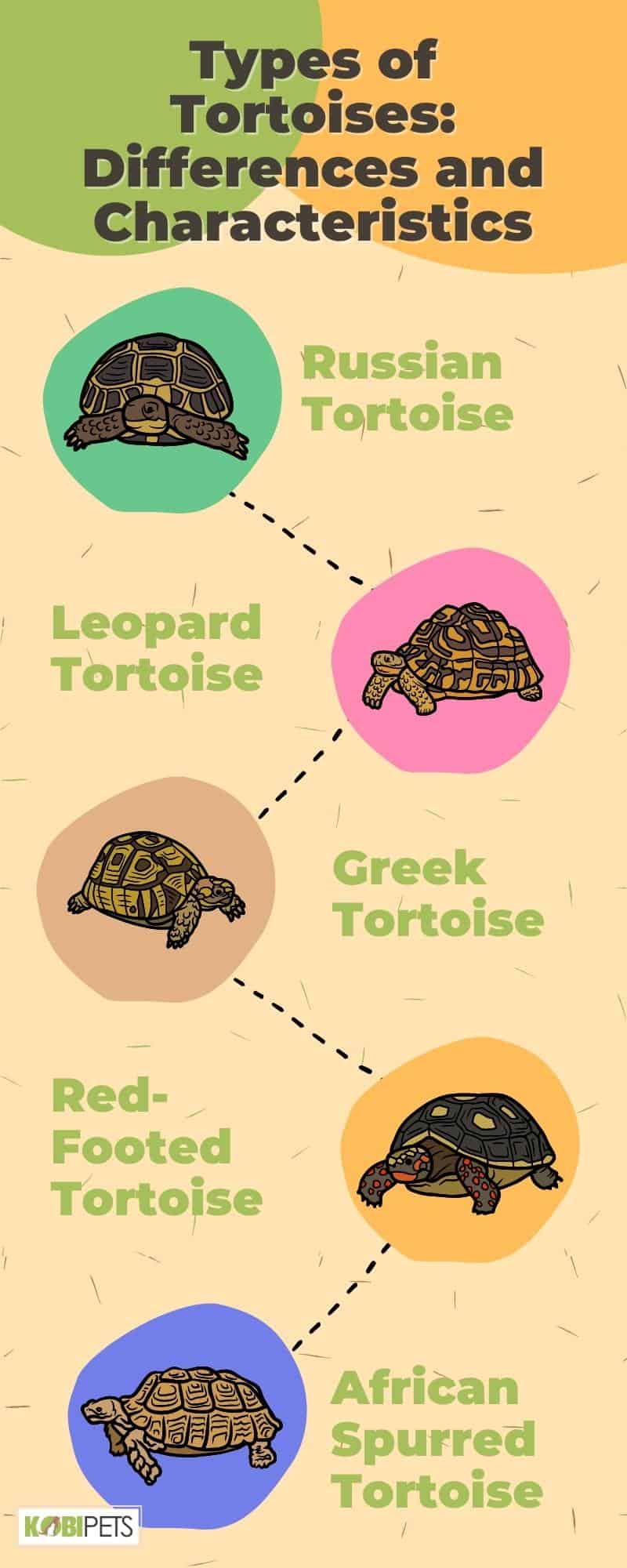
Types of Tortoises: Differences and Characteristics
Russian Tortoise
The Russian tortoise, also known as the Horsfield’s tortoise, is a popular pet species known for its compact size and docile nature. They are native to the deserts and steppes of Central Asia and can grow up to 20 inches in length.
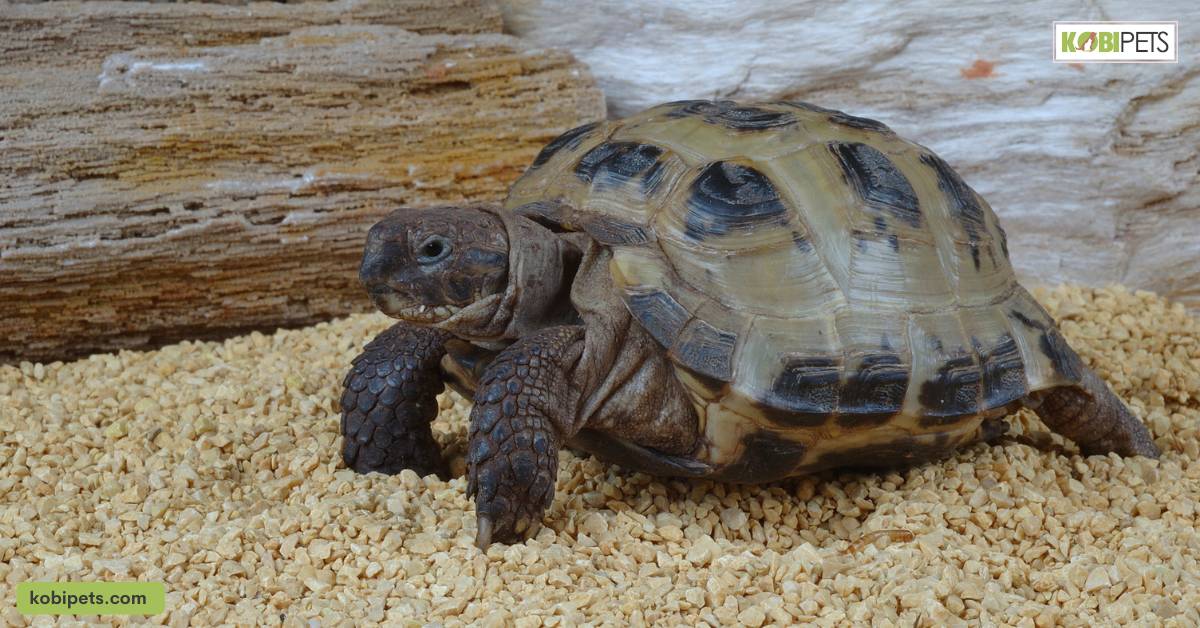
Leopard Tortoise
The Leopard Tortoise is native to Africa and is one of the largest species of tortoise in the world, reaching up to 30 inches in length. They are named for their unique shell pattern that resembles the spots of a leopard.
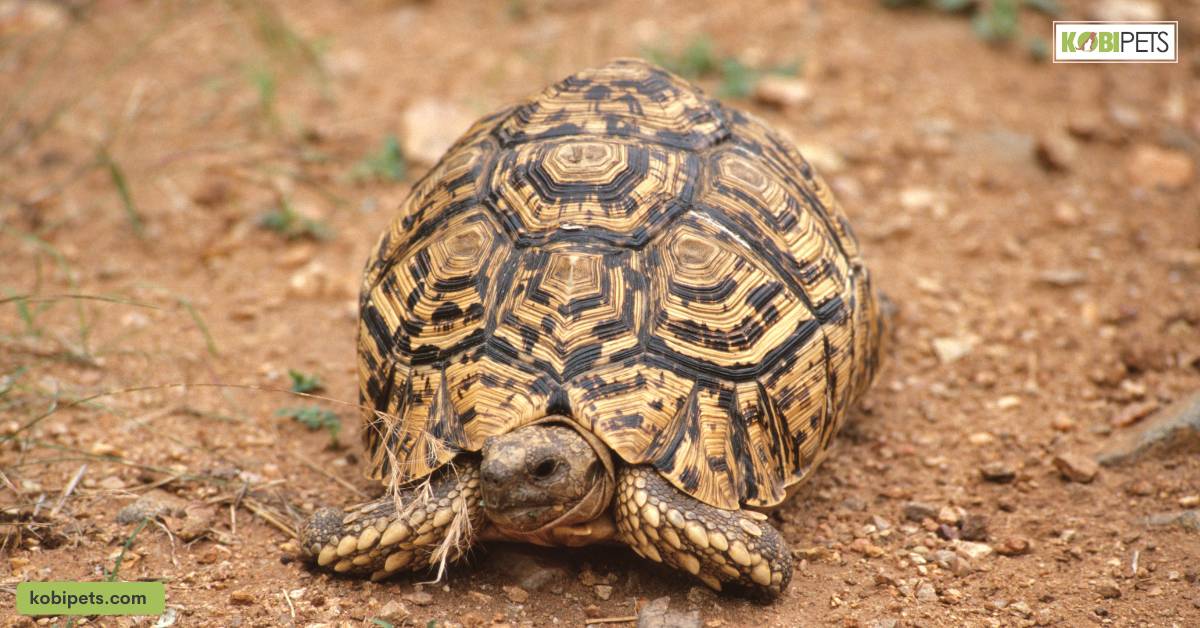
Greek Tortoise
The Greek Tortoise, also known as the Mediterranean Tortoise, is a small species of tortoise that is native to the Mediterranean region. They are known for their herbivorous diet and their active personalities.
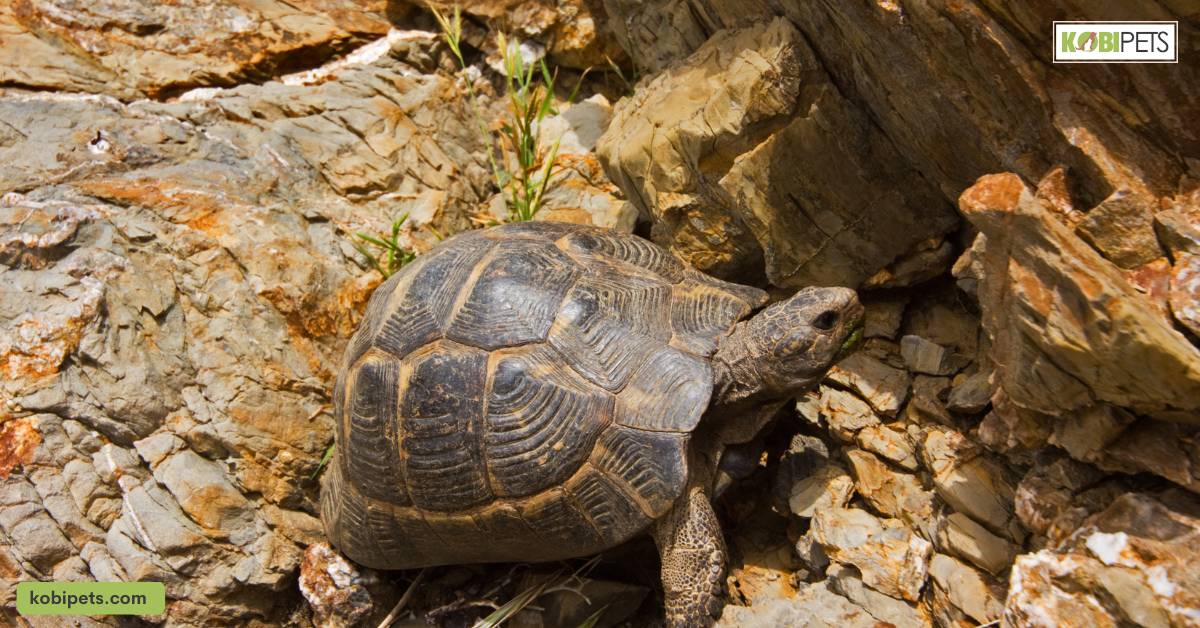
Red-Footed Tortoise
The Red-Footed Tortoise is native to South America and is known for its bright red or orange markings on its feet and legs. They are also known for their playful and curious personalities.
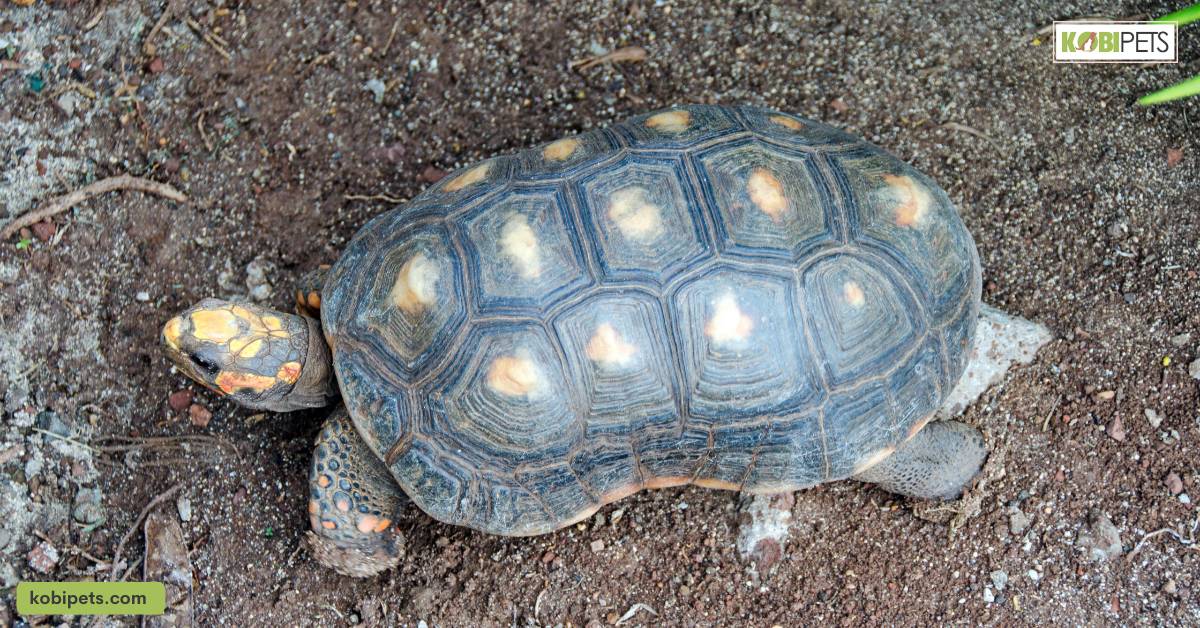
African Spurred Tortoise
The African Spurred Tortoise, also known as the sulcata tortoise, is the third-largest species of tortoise in the world, reaching up to 100 pounds in weight. They are native to the African savannas and are known for their herbivorous diet and long lifespan.
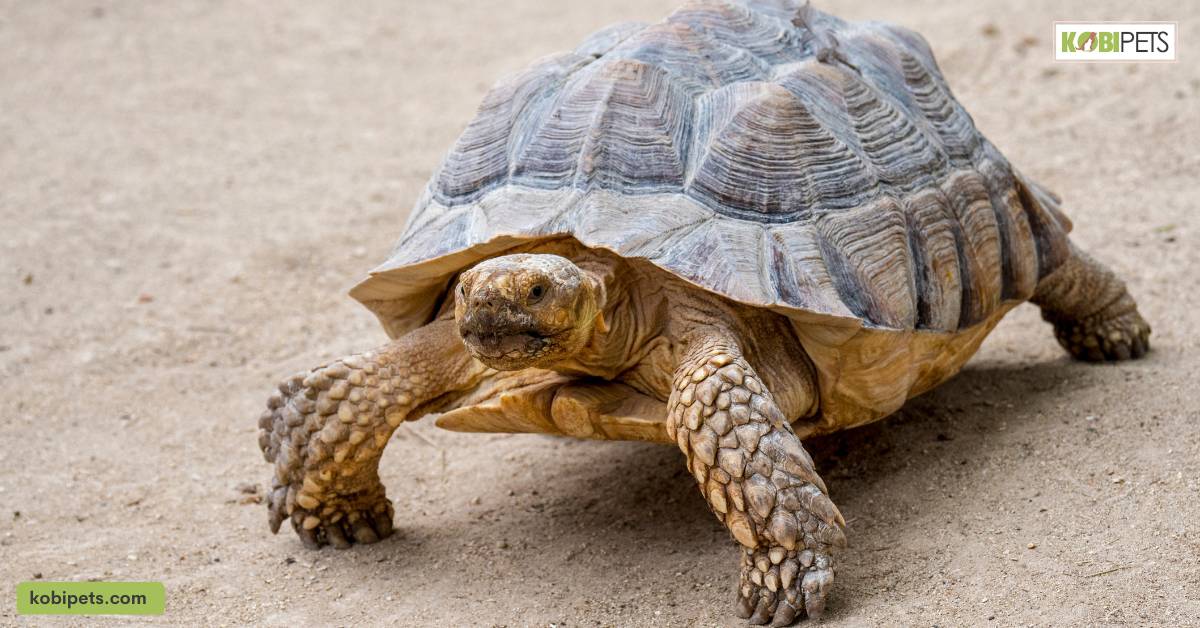
Tortoise Housing and Environment
When it comes to pet tortoise housing and the environment, there are a few important things to keep in mind.
A large enclosure, known as a tortoise table is recommended for housing young tortoises.
This should have a basking spot of 30-35°C inside the enclosure and should be well-ventilated. Adult tortoises need an enclosure that’s at least 50 gallons in volume.
For smaller tortoises, an 8ft X 4ft (244cm X 122cm) enclosure is sufficient. It is also important to provide an adequate substrate for your pet to burrow into and hide under.
A homemade wooden enclosure is usually preferred for indoor housing, also known as turtle tables or tortoise tables. These allow excellent airflow and a low-humidity environment which is essential for the health of your pet.
It is also important to provide some form of shelter such as a cave or hide box so that your pet can feel secure and safe from predators.
It is important to remember that each species of tortoise has different requirements when it comes to its environment and housing needs. Be sure to do research on the particular species you own before setting up its habitat so that you can ensure its health and well-being.
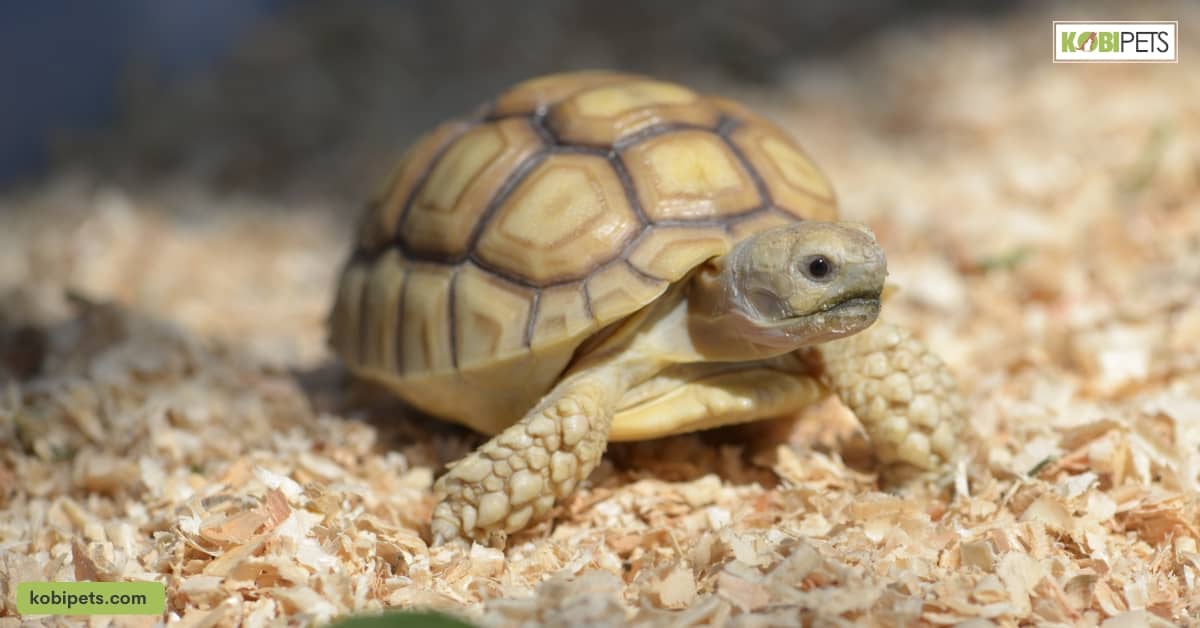
Tortoise Diet and Nutrition
Tortoises are strict herbivores and require a diet that is high in fiber and low in fat and protein.
A balanced diet for tortoises should include grasses, hay, flowers, weeds, greens, vegetables, fruits, and fungi.
Grass hay should always be available for your tortoise as it provides essential fiber to their diet.
Additionally, you can supplement their diet with treats such as raw vegetables and fruits. It is important to note that some species of tortoises are omnivorous and may require additional sources of protein such as earthworms or other insects.
When selecting food for your tortoise it is important to choose items that are safe for them to consume. Avoid foods that contain pesticides or artificial colors/flavors as these can be harmful to your pet’s health.
Additionally, be sure to provide fresh water daily so they can stay hydrated.
Overall, providing a balanced diet for your tortoise is essential for its health and well-being. By understanding what types of food they need and avoiding those that could potentially harm them, you can ensure they get the nutrition they need to live a long and healthy life!
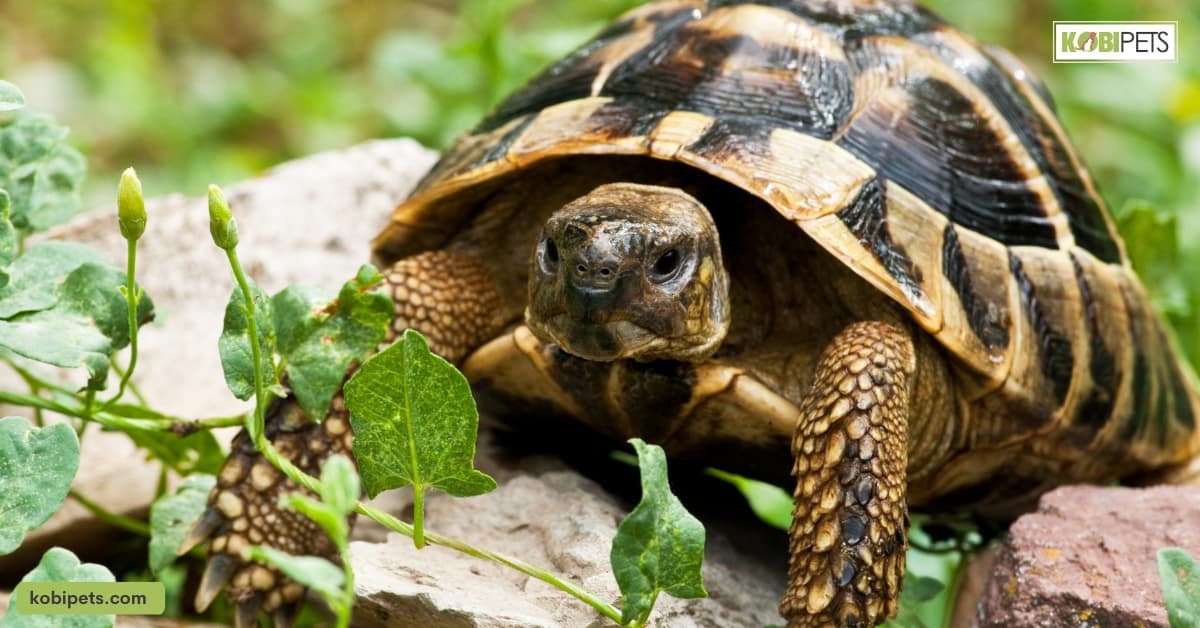
Tortoise Health and Wellness
Tortoise health and wellness are an important part of keeping your pet healthy and happy. Proper nutrition, clean living conditions, and regular checkups are essential for your tortoise’s long-term well-being.
A balanced diet should include a variety of fresh fruits, vegetables, and proteins. Cleaning the enclosure regularly will help prevent disease and keep your tortoise comfortable.
Regular checkups with a qualified veterinarian can help catch any potential problems early on. With proper care, your tortoise can live a long and healthy life!
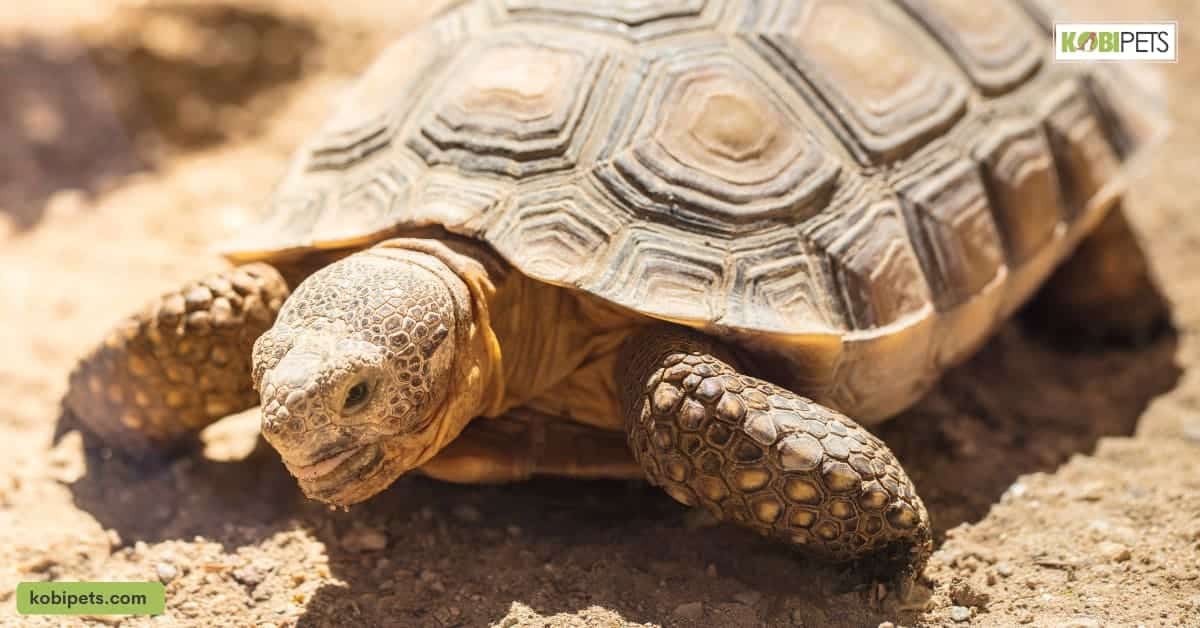
Tortoise Handling and Interaction
Tortoises are fascinating pets that have been kept by humans for thousands of years. They are known for their slow movements and long lifespan and can make great companions for those who are willing to commit to providing proper care and attention.
However, it’s important to understand how to handle and interact with tortoises in a way that is safe and appropriate.
Tortoises are generally slow-moving and docile, but they can be easily frightened or stressed by handling that is too rough or sudden.
To minimize stress and ensure safety, it’s important to approach tortoises slowly and calmly and to support their bodies securely when picking them up.
| Action | Recommendation |
|---|---|
| Picking up a tortoise | Use both hands to support the shell and avoid putting too much pressure on its legs. |
| Holding a tortoise | Hold the tortoise close to your body and support its shell with both hands. |
| Setting down a tortoise | Place the tortoise on a flat surface and let it crawl off your hands at its own pace. |
It’s also important to keep in mind that tortoises are shy animals that prefer to be left alone. Over-handling can cause stress and should be avoided.
Instead, it’s better to observe and interact with tortoises from a distance, providing them with opportunities to move around and explore their environment.
In conclusion, handling and interacting with tortoises requires patience and gentleness. By following these tips, you can ensure that your pet tortoise is safe and comfortable and that you have a positive and enjoyable experience as a tortoise keeper.
Common Health Issues and How to Address Them
Like all living creatures, tortoises are susceptible to a range of health issues that can impact their quality of life. As a tortoise owner, it’s important to be aware of the most common health problems and to know how to address them.
- Respiratory infections: Tortoises can develop respiratory infections that cause symptoms such as wheezing, coughing, and discharge from the nose or mouth. If you suspect your tortoise has a respiratory infection, it’s important to see a veterinarian as soon as possible. Treatment may include antibiotics and supportive care.
- Parasites: Tortoises can be infected with a variety of parasites, including mites, ticks, and intestinal worms. Parasites can cause a range of symptoms, including anemia, weight loss, and diarrhea. If you suspect your tortoise has a parasite problem, it’s important to see a veterinarian for a diagnosis and treatment plan.
- Shell rot: Tortoises have a protective shell that can become damaged, leading to a condition called shell rot. Shell rot can cause softening and discoloration of the shell, and can lead to infection if left untreated. To prevent shell rot, it’s important to maintain a clean and dry environment for your tortoise and to seek veterinary care if you notice any signs of shell damage.
- Vitamin and mineral deficiencies: Tortoises require a balanced diet that provides all of the essential vitamins and minerals they need to thrive. If they don’t get enough of these nutrients, they can develop deficiencies that can cause health problems. To prevent vitamin and mineral deficiencies, it’s important to feed your tortoise a well-balanced diet and to consult a veterinarian for recommendations on dietary supplements if needed.
- Heat stress: Tortoises are reptiles that rely on their environment to regulate their body temperature. If they become too hot, they can develop heat stress, which can cause symptoms such as lethargy, decreased appetite, and even death. To prevent heat stress, it’s important to provide a suitable environment for your tortoise, including a warm basking area and a cool hide box.
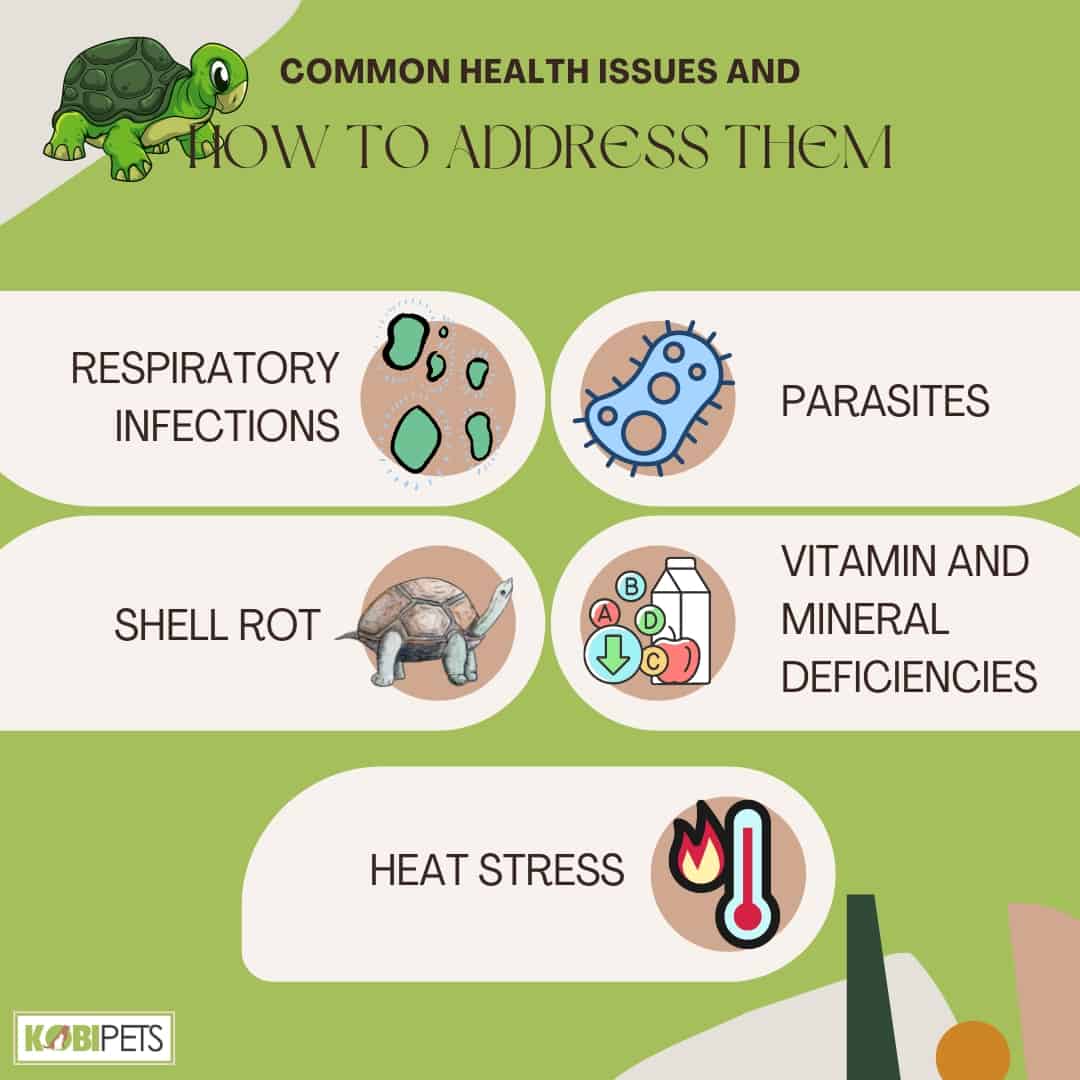
Common Health Issues and How to Address Them
Tortoise Life Expectancy and Aging
Tortoises are known for their long lifespans, with some species living up to 200 years or more. But how do they manage to live so long? It all comes down to the way they age.
Unlike humans, tortoises don’t experience a rapid health decline as they age. Instead, their aging process is much slower and more gradual. This means that they can remain healthy and active well into old age.
Another factor in their longevity is their diet. Tortoises are herbivores, which means they eat mostly plants and vegetation. This type of diet is low in fat and high in fiber, both of which are beneficial for maintaining good health over time.
Finally, tortoises have evolved over millions of years to be able to survive harsh conditions such as extreme temperatures and lack of food or water. This has enabled them to live longer than many other animals.
So if you’re looking for a pet that will stick around for a while, consider getting a tortoise! With proper care and nutrition, your tortoise could easily outlive you!
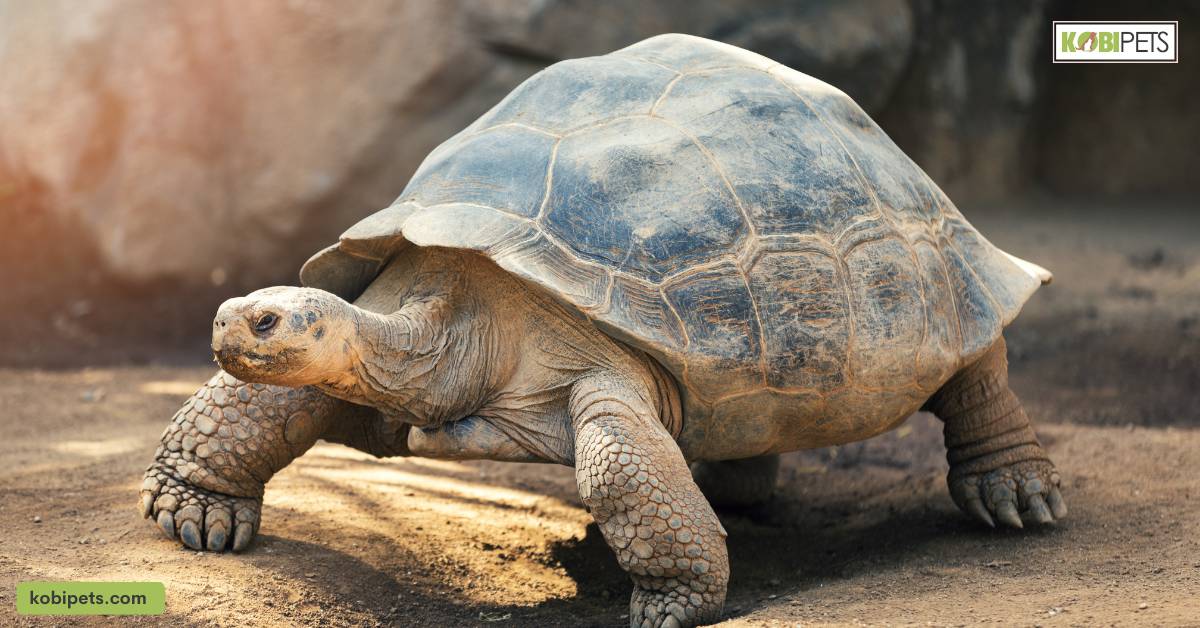
Tortoise Breeding and Reproduction
Tortoise breeding and reproduction is a fascinating process. In the wild, tortoises may not be sexually mature or capable of producing fertile eggs until 15 to 20 years of age. Mating typically occurs at any time other than during hibernation.
Females store sperm and may lay fertile eggs for several years after separation from a male. For greater reproductive success, females will sometimes have two clutches of eggs due to their reproductive anatomy which allows them to separate the egg production process into multiple batches.
In captivity, it makes sense to breed tortoises in their country of origin as this allows for the eggs to be incubated under optimum conditions and the hatchlings reared until they are ready for release into the wild.
It is important that tortoises are well-prepared before breeding as this will ensure healthy hatchlings.
In addition, it is important to be aware of potential reproductive problems in tortoises such as infertility or egg binding which can occur even if your tortoise lives alone due to its active reproductive system.
Overall, understanding how tortoises mate and reproduce is essential for successful conservation efforts and ensuring healthy populations in the wild.
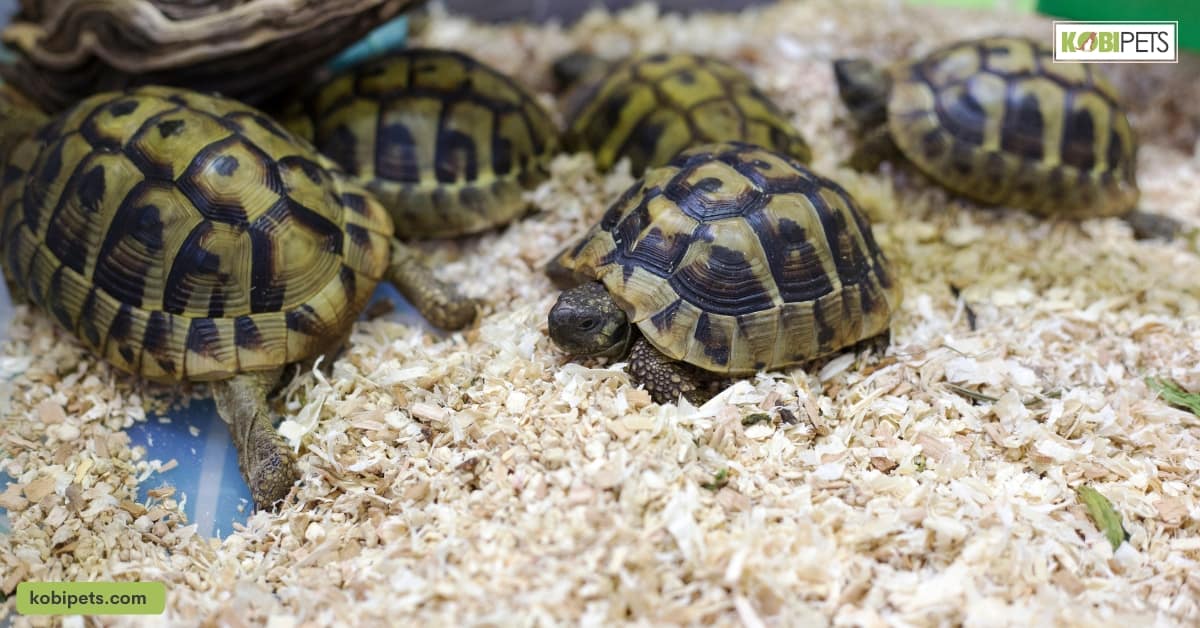
In conclusion
In conclusion, owning a pet tortoise can be a very rewarding experience. These animals can make great companions and are relatively easy to care for. However, it is important to do your research before getting one of these pets, as they have specific needs.
Make sure you have the time and resources to provide your tortoise with the proper care, and you will be able to enjoy many years with your new friend.






